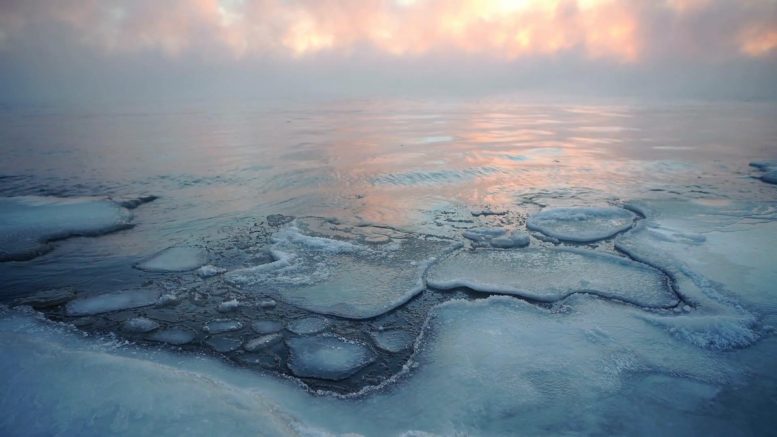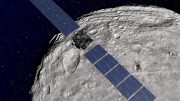
A recent study by Portland State University has uncovered the alarming disappearance and transformation of glaciers in the Western United States. The inventory, updating a mid-20th-century record, found that many glaciers have vanished or no longer qualify as glaciers. This loss poses serious environmental challenges, including affecting water flow and contributing to sea level rise.
Glaciers in the Western United States are disappearing.
A recent study by researchers at Portland State University has revealed significant changes in glaciers. The findings include the complete disappearance of certain glaciers, the cessation of movement in others, and a reduction in size for some below the minimum threshold of 0.01 square kilometers. Additionally, the study identified certain formations as rock glaciers, which are essentially rocky debris containing ice within their pores.
Detailed Inventory by PSU Researchers
Andrew Fountain, a geology professor emeritus at PSU, and research assistant Bryce Glenn, inventoried glaciers and perennial snowfields in the western continental U.S. using aerial and satellite imagery between 2013 and 2020. The inventory, published in the journal Earth System Science Data, identified 1,331 glaciers and 1,176 perennial snowfields.
It updates a mid-20th century inventory, derived from U.S. Geological Survey topographic maps made over a 40-year span, and provides a baseline for estimating future changes amid a warming climate.
“Glaciers are disappearing and this is a quantification of how many around us have disappeared and will probably continue to disappear,” Fountain said.
Excluded Glaciers and Environmental Impact
The new inventory excludes 52 of the 612 officially named glaciers because they are no longer glaciers. The official names are those listed in the federal Geographic Names Information System — the nation’s repository for the names and locations of landscape features. Milk Lake Glacier in Washington’s Mt. Baker-Snoqualmie National Forest and Wyoming’s Hooker Glacier have disappeared altogether; 25 were instead classified as perennial snowfields, which unlike glaciers don’t move; 18 had areas smaller than the commonly used threshold of 0.01 square kilometers or roughly the size of two football fields side-by-side; and seven were considered rock glaciers.
The loss of glaciers impacts more than aesthetics. Glaciers act as a natural regulator of streamflow, Fountain said. They melt a lot during hot dry periods and don’t melt much during cool rainy periods. As glaciers shrink, they have less ability to buffer seasonal runoff variations and watersheds become more susceptible to drought. Retreating glaciers also leave behind sharp, steep embankments on either side, which can collapse and result in catastrophic debris flows. Globally, the loss of glaciers is also a major contributor to sea level rise.
Fountain’s co-authors are Bryce Glenn, a PSU alum and research analyst, and Christopher McNeil, a geophysicist with the USGS’ Alaska Science Center. Looking ahead, the group is studying the volume change of the glaciers to see how much ice they’ve lost since the USGS mapping.
Missing Glaciers: List of officially named glaciers not classified as glaciers and excluded from the final inventory
| State | Region | Glacier Name | Reason |
|---|---|---|---|
| California | Sierra Nevada | Matthes Glaciers | rock glacier |
| California | Sierra Nevada | Mount Warlow Glacier | rock glacier |
| California | Sierra Nevada | Powell Glacier | rock glacier |
| Colorado | Front Range | Isabelle Glacier | perennial snowfield |
| Colorado | Front Range | Mills Glacier | perennial snowfield |
| Colorado | Front Range | Moomaw Glacier | perennial snowfield |
| Colorado | Front Range | Peck Glacier | perennial snowfield |
| Colorado | Front Range | Rowe Glacier | < 0.01km2 |
| Colorado | Front Range | Saint Marys Glacier | < 0.01km2 |
| Colorado | Front Range | Taylor Glacier | rock glacier |
| Colorado | Front Range | The Dove | < 0.01km2 |
| Idaho | Lost River Range | Borah Glacier | rock glacier |
| Montana | Beartooth Mountains–Absaroka Range | Grasshopper Glacier | rock glacier |
| Montana | Cabinet Mountains | Blackwell Glacier | perennial snowfield |
| Montana | Crazy Mountains | Grasshopper Glacier | rock glacier |
| Montana | Lewis Range | Boulder Glacier | perennial snowfield |
| Montana | Mission–Swan–Flathead ranges | Fissure Glacier | < 0.01km2 |
| Montana | Mission–Swan–Flathead ranges | Gray Wolf Glacier | perennial snowfield |
| Oregon | Cascade Range | Carver Glacier | perennial snowfield |
| Oregon | Cascade Range | Clark Glacier | perennial snowfield |
| Oregon | Cascade Range | Irving Glacier | perennial snowfield |
| Oregon | Cascade Range | Lathrop Glacier | < 0.01km2 |
| Oregon | Cascade Range | Palmer Glacier | perennial snowfield |
| Oregon | Cascade Range | Skinner Glacier | perennial snowfield |
| Oregon | Cascade Range | Thayer Glacier | < 0.01km2 |
| Oregon | Wallowa Mountains | Benson Glacier | perennial snowfield |
| Washington | Cascade Range–Northern | Lyall Glacier | perennial snowfield |
| Washington | Cascade Range–Northern | Milk Lake Glacier | disappeared |
| Washington | Cascade Range–Northern | Snow Creek Glacier | perennial snowfield |
| Washington | Cascade Range–Northern | Spider Glacier | perennial snowfield |
| Washington | Cascade Range–Northern | Table Mountain Glacier | < 0.01km2 |
| Washington | Cascade Range–Southern | Ape Glacier | < 0.01km2 |
| Washington | Cascade Range–Southern | Dryer Glacier | perennial snowfield |
| Washington | Cascade Range–Southern | Forsyth Glacier | < 0.01km2 |
| Washington | Cascade Range–Southern | Meade Glacier | perennial snowfield |
| Washington | Cascade Range–Southern | Nelson Glacier | < 0.01km2 |
| Washington | Cascade Range–Southern | Packwood Glacier | perennial snowfield |
| Washington | Cascade Range–Southern | Pinnacle Glacier | < 0.01km2 |
| Washington | Cascade Range–Southern | Pyramid Glaciers | < 0.01km2 |
| Washington | Cascade Range–Southern | Shoestring Glacier | < 0.01km2 |
| Washington | Cascade Range–Southern | Stevens Glacier | perennial snowfield |
| Washington | Cascade Range–Southern | Talus Glacier | perennial snowfield |
| Washington | Cascade Range–Southern | Unicorn Glacier | < 0.01km2 |
| Washington | Cascade Range–Southern | Williwakas Glacier | perennial snowfield |
| Washington | Olympic Mountains | Anderson Glacier | perennial snowfield |
| Washington | Olympic Mountains | Lillian Glacier | < 0.01km2 |
| Wyoming | Absaroka Range | DuNoir Glacier | < 0.01km2 |
| Wyoming | Teton Range | Petersen Glacier | < 0.01km2 |
| Wyoming | Teton Range | Teepe Glacier | perennial snowfield |
| Wyoming | Wind River Range | Hooker Glacier | disappeared |
| Wyoming | Wind River Range | Harrower Glacier | perennial snowfield |
| Wyoming | Wind River Range | Tiny Glacier | < 0.01km2 |
Reference: “Inventory of glaciers and perennial snowfields of the conterminous USA” by Andrew G. Fountain, Bryce Glenn and Christopher Mcneil, 15 September 2023, Earth System Science Data.
DOI: 10.5194/essd-15-4077-2023









Reading about Greenland and its Accelerated Melting: Greenland’s Glacier Retreat Doubled in 20 Years (https://scitechdaily.com/accelerated-melting-greenlands-glacier-retreat-doubled-in-20-years/) it shouldn’t come as a surprise to the people that monitor the Glaciers in the USA and with El Nino this winter we shouldn’t be surprised at more receding of Glacier
Western US glaciers have been retreating for 20,000 years, except for a slight re-bound during the Little Ice Age.